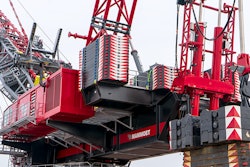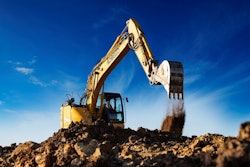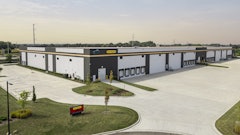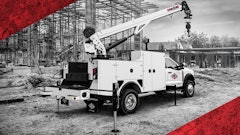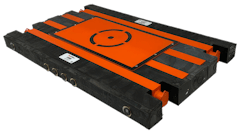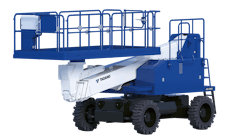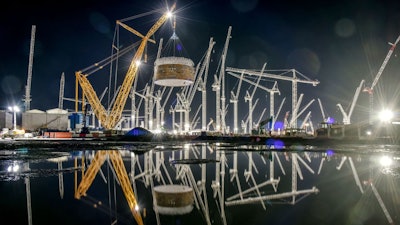
Hinkley Point C, a construction site located in Somerset, UK, builds the first nuclear power station in the UK in over 20 years with the help of 52 tower cranes.
The project aims to provide low-carbon electricity for six million homes, 25,000 employment opportunities and up to 1,000 apprenticeships. With the implementation of two EPR reactors, the project will supply nine million tons of carbon dioxide a year — an initiative in the right direction for the UK's plan to reduce carbon emissions.
With the help of AMCS Technologies (AMCS), 52 tower cranes were able to safely deploy at the construction site. AMCS was able to provide zoning and anti-collision systems for lifting machine to the 52 tower cranes at Hinkley Point C. AMCS Technologies
AMCS Technologies
In order to complete these housing components, the tower cranes will deploy horizontal and luffing jibs to complete two building structures that will house the nuclear reactor.
The 52 tower cranes are all equipped with the DCS 61-S system. The software is the newest anti-collision and zoning system from AMCS. These systems have been running for three years, and continue to ensure productivity and safety of the machines, and the 3,500 workers daily.
The system works by preventing the tower cranes from colliding in the interference zones around the construction site. Collisions can include the tower cranes' jibs and cables, causing accidents throughout the project cycle. However, a system like this recognizes any accidents before it happens. AMCS Technologies
AMCS Technologies
The device works continuously and manages the distance between each of the crane’s elements with one another. It evaluates speed, direction of movement and the distance of the crane’s parts. If the system detects a potential collision, the crane would slow down and stop at a pre-set distance from the other cranes in the area.
Since this system is in place, the 52 tower cranes had the ability to work in the same area without interference, implementing safety and productivity throughout each construction phase of the project.
Information provided by AMCS Technologies and edited by Chantal Zimmermann.




